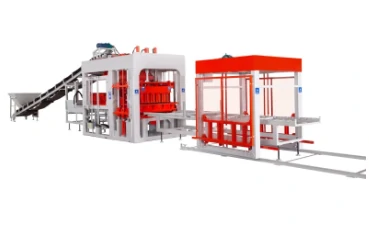What are the common repair methods for brick making machines?
Apr 18, 2025
What should you do if your block making Maschine breaks down? Don’t worry, any failure has its reasons and manifestations. Let’s see how to repair the brick making machines!
Mechanical system failure
1.Abnormal transmission components
Fault phenomenon: belt slippage, breakage; abnormal gear meshing noise; chain loosening or jamming.
Maintenance method: Check belt tension, adjust pulley position or replace aging belt; lubricate gears, replace gears when severely worn; adjust chain tensioner, replace broken chains, and lubricate regularly.
2. Bearing damage or poor lubrication
Fault phenomenon: heating and abnormal noise at the bearing part, and shaking during equipment operation.
Maintenance method: Stop the machine to check whether the bearing grease is missing and add grease; if the bearing is worn or the ball is broken, replace the bearing in time; ensure the concentricity of the bearing during installation to avoid damage caused by forced installation.

Hydraulic system failure
1. Insufficient or unstable hydraulic pressure
Failure phenomenon: The pressure of brick blank molding is insufficient, and the strength of finished bricks is insufficient.
Maintenance method: Check whether the hydraulic pump is emptied, add hydraulic oil or clean the filter element; check whether the overflow valve and solenoid valve are stuck or the seal fails, disassemble and clean and replace the damaged seals.
2. Hydraulic system oil leakage
Failure phenomenon: Oil seepage at the oil pipe joint, hydraulic cylinder interface or valve body.
Maintenance method: Tighten the loose pipe joint and replace the aging O-ring; check whether the oil pipe is damaged and replace the new oil pipe; when the inner wall of the hydraulic cylinder barrel is worn, it is necessary to grind and repair or replace the cylinder barrel.
Electrical control system failure
1. The motor does not start or trips
Failure phenomenon: The motor does not respond after pressing the start button, or trips during operation.
Maintenance method: Check whether the power supply voltage is normal, whether the terminal is loose or oxidized, and re-tighten the wiring; test the resistance of the motor winding. If the winding is burned, the motor needs to be repaired or replaced; check whether the thermal relay and circuit breaker are overloaded, adjust the set value or replace the component.
2. Failure of control components
Fault phenomenon: The equipment action logic is confused and the sensor signal is abnormal.
Maintenance method: Use a multimeter to check whether the relay coil and contacts are conductive, and replace the damaged relay; when the sensor fails, calibrate the installation position or replace a new sensor.
Failure of mold and molding system
1. Mold wear or deformation
Fault phenomenon: The brick blank has large size deviation, many surface burrs, and even cannot be demolded.
Maintenance method: Regularly check the wear of the mold cavity and core. Minor wear can be repaired by grinding; when severely worn or deformed, replace the mold with a wear-resistant material; adjust the mold installation position to ensure that the upper and lower molds are aligned.
2. Mold stuck or demolding is difficult
Fault phenomenon: The brick blank cannot be demolded smoothly after molding.
Maintenance method: clean the concrete residue in the mold; check whether the demoulding mechanism is stuck, lubricate the moving parts, and avoid damaging the mold by forced demoulding.
3. Inaccurate mold positioning
Fault phenomenon: large diagonal deviation of the brick blank and edge defect.
Maintenance method: calibrate the parallelism of the mold guide column and guide sleeve, adjust the positioning bolts; check whether the mold mounting base is loose, re-tighten and level.
Vibration system failure
1. The vibration motor does not work or the vibration is weak
Fault phenomenon: uneven concrete distribution and insufficient density of the brick blank.
Maintenance method: Check the power connection and fuse of the vibration motor, and repair the circuit breaker fault; multiple sets of vibration motors need to run synchronously, and check whether the control circuit is triggered synchronously.
2. Abnormal vibration noise
Fault phenomenon: impact or abnormal sound is emitted during vibration.
Maintenance method: tighten the connecting bolts between the vibration motor and the frame, and install anti-vibration pads to reduce resonance; check whether the vibration platform support spring is broken or fatigued, and replace the spring of the same specification.
If you encounter a complex fault, it is recommended to contact the equipment manufacturer’s technicians for on-site maintenance in time to avoid disassembling the Ziegelherstellungsmaschine by yourself and causing greater damage. Of course, if you want to directly replace the block machine, you can also contact us directly!
